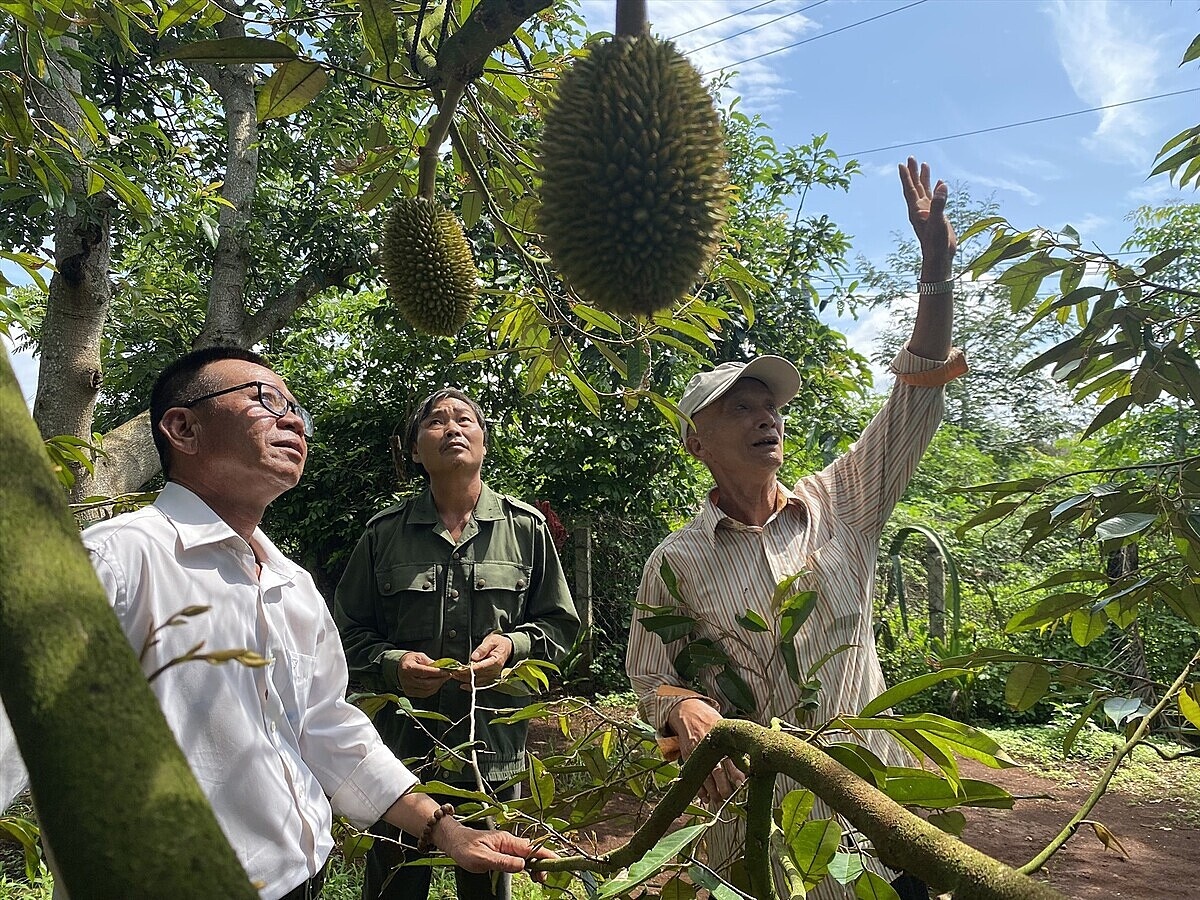Improving the production quality of farmers and cooperatives is one of the important tasks in agricultural production to continue to bring the agricultural sector to achieve more positive results in export.
According to the Ministry of Agriculture and Rural Development, fruit and vegetable exports in 2024 will reach 7.1 billion USD, an increase of nearly 27% over the same period in 2023. Based on this foundation, the authorities are expecting that the Vietnamese fruit and vegetable industry can earn more than 8 billion USD in 2025.
Strict regulations
However, opportunities also come with challenges because sustainable exports are not simple. Along with that, although domestic production has made progress, it has not really made a breakthrough. Meanwhile, the export regulations of many markets are very strict.
According to the Plant Protection Department, even for grapefruit exports, each market has different requirements on plant quarantine. The US market requires irradiation at a minimum absorbed dose of 150 Gy, the New Zealand market requires irradiation at a minimum absorbed dose of 400 Gy.
As for the Korean market, plant quarantine work, in addition to requiring treatment facilities to be located within packaging facilities approved by the Plant Protection Department, must be conducted under the supervision of Korean and Vietnamese plant quarantine officers. The hot steam treatment time must be at least 20 minutes after the temperature at the center of the fruit reaches 47 degrees Celsius or at least 40 minutes after the temperature at the center of the fruit reaches 46.5 degrees Celsius.
Also with the pest monitoring regulations of the Korean market, there is a requirement to monitor pomelo gardens for two species of pomelo borers, Prays endocarpa and Citripestis sagittiferella, every 2 weeks from the flowering period until the end of harvest.

At the same time, if the two above-mentioned pests are detected with infection rates higher than the permitted standards or cannot be controlled by chemical measures, the cooperative’s orchard or enterprise’s export will be suspended for the remainder of the season.
The US market requires strict control of fungal pathogens on exported grapefruit. Therefore, this market requires the exporter to remove all leaves, stems and other parts of the tree (except for stems shorter than 2.5cm and still attached to the fruit). When exporting, grapefruit must also be cleaned, treated with fungicides (eg Imazalil and/or thiabendazole), and covered with film.
Exported grapefruit batches will be rejected if they are found to have been treated with sulfur (SO2), including Sodium Metabisulfite (Na2S2O5).
Obviously, the export requirements of each market are different but in general, they are very strict. While to ensure these regulations, the production and processing processes of cooperatives and farmers must follow each step correctly.
However, according to statistics from the Institute of Agricultural Planning and Design (Ministry of Agriculture and Rural Development), the area applying technical solutions (cultivation techniques, CSA, IPM, ICM, …) of 11 key fruit trees in 2023 is about 206,804.5 hectares, accounting for less than 25% of the total existing area of these 11 types of trees nationwide.
Even in 2023, the country had 161,488 hectares of bananas of all kinds (the largest area of crops in the country, but only about 12% of the area applied advanced and sustainable farming solutions and processes to adapt to climate change. As for durian, although it had the second largest area of more than 150 hectares, only 24% of the area applied advanced and sustainable farming techniques.
Mr. Le Minh Trung, Director of Minh Trung Agricultural Service Cooperative (Tay Ninh) said that the consumption of custard apples in the domestic market for the cooperative is currently quite favorable. Exporting this agricultural product is also mainly to Cambodia and some easy-going markets because the entire area is currently applying VietGAP standards. According to Mr. Le Minh Trung, this standard is relatively simple, easy for members and farmers to apply, but if serving exports, it will be difficult because current markets have higher quality requirements.
How to overcome the challenges?
To meet export demand and increase income for people and cooperatives, for the fruit industry alone, the Ministry of Agriculture and Rural Development is setting a target of 1.3 million hectares of fruit trees nationwide by 2030, with an output of over 16 million tons. Of which, the main fruit tree area is 1 million hectares, with an output of 13-14 million tons.
Obviously, experts believe that increasing the area needs to go hand in hand with improving quality. Because currently, exporting an official agricultural product is not simple. Even the Australian market has exported a number of agricultural products such as lychee, mango, dragon fruit, longan, and passion fruit. But according to the Plant Protection Department, the negotiation process to open passion fruit to this country started in 2016 when the Plant Protection Department sent a dossier but had to go through many procedures such as: checking growing areas in Vietnam, collecting opinions…, the Plant Protection Department implemented Dose mapping – Australia agreed on the results and by August 2024, the Plant Protection Department and the Australian side agreed on export regulations, then this fruit was officially exported to Australia.
Therefore, the first thing to pay attention to is organizing production through building concentrated fruit growing areas according to the production – consumption chain, meeting the conditions for granting growing area codes and traceability. In particular, focusing on synchronously applying technical measures along with investing in building processing and preservation facilities is extremely important.
Mr. Nguyen Trung Quy, Director of Hung Thinh Phat Clean Agriculture Cooperative (Tien Giang), said that the transition from traditional production to the application of science and technology such as VietGAP, GlobalGAP needs to go hand in hand with investment in renovating and building irrigation systems in concentrated fruit tree production areas to meet the requirements of proactive irrigation and drainage or help cooperatives apply advanced water-saving irrigation technology (such as drip irrigation, mist irrigation, etc.).
At present, many cooperatives find it difficult to be proactive in investing in infrastructure. Therefore, it is necessary to have support from management agencies in investing in irrigation works in concentrated production areas as well as investing in traffic works connecting concentrated production areas with main traffic routes and other essential infrastructure works to serve the production and consumption of fruit tree products conveniently. This also contributes to improving quality and reducing post-harvest losses.
Mr. Hoang Anh Dung, General Director of Intraco Company, said that the requirement for greening in production is of great interest to many markets. However, to green the production process, not only cooperatives and small enterprises but also large enterprises are facing difficulties in terms of capital, raw materials, infrastructure, etc. However, in reality, there is no other way but for production and export units to overcome this. Because even the implementation of greening the dragon fruit chain by switching from using compact light bulbs to LED lights that this unit applies can help reduce up to 68% of emissions from electricity use.
Source: https://vnbusiness.vn/hop-tac-xa/tao-da-but-pha-cho-xuat-khau-nong-san-1104493.html
